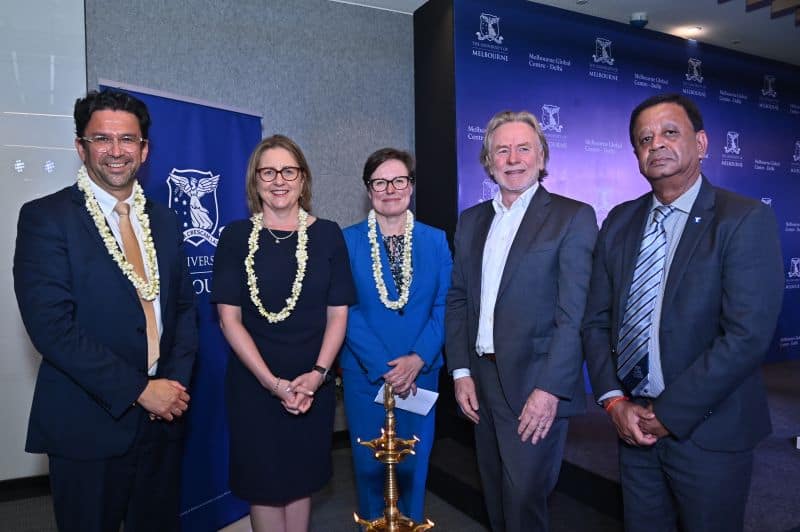The raft of legislative changes has thrown the international education sector in the country into confusion and turmoil.
“The reality is that not everyone who wants to come to Canada will be able to – just like not everyone who wants to stay in Canada will be able to,” immigration minister Marc Miller said in a press conference on September 18.
The policy changes are driven by the IRCC’s overall goal of reducing temporary residents from 6.5% of Canada’s total population to 5% by 2026. The legislation can be broadly split into two categories; limits on temporary residents including international students and workers, and changes to the asylum system.
In a nutshell, the changes impacting international higher education are as follows:
- A 10% reduction on the 2024 cap for next year
- The 2025-2026 study permit cap will include previously exempt master’s and doctoral students
- All PGWP applicants will be required to demonstrate a minimum language proficiency in French or English
- International students graduating from public colleges will no longer be eligible for a three-year PGWP unless their work is linked to labour market needs
Meanwhile, work permit eligibility will be limited to:
- Spouses of master’s degree students whose program is at least 16 months in duration
- Spouses of foreign workers in management or professional occupations or in sectors with labour shortages – under Canada’s work permit programs (TFWP and IMP)
In the press briefing, minister Miller prefaced the changes by highlighting the growth in the number of temporary residents in Canada, which, he observed, “has grown exponentially over the last few years from about 437,000 individuals in 2019 alone to about 1.2 million in 2023”.
While being cognisant of this, educators are pointing to the impact that existing policies are already having, with the number of Canadian study permit applications processed by the IRCC having dropped by 54% in Q2 2024 compared to Q2 2023.
While being cognisant of this, educators are pointing to the impact that existing policies are already having, with the number of Canadian study permit applications processed by the IRCC having dropped by 54% in Q2 2024 compared to Q2 2023.
“The cap on international students, coupled with changes to PGWP and spousal work permit eligibility, has thus far resulted in a greater reduction in international student numbers in 2024 than it had intended; [the] announcement of further reductions hardly seems necessary,” Rachel Lindsey, director of public affairs at Languages Canada told The PIE News.
But if you’re confused about the changes and what they mean, you’re not alone. Below, the PIE answers all the burning questions about the new legislation.
I’ve seen different cap numbers and I’m confused. What are they?
The “erratic” policy announcements have triggered confusion in the sector, with the new cap (437,000) appearing to be larger than the original limits announced in January (360,000).
This is because the government’s new cap of 437,000 – a 10% reduction from the 2024 target of 485,000 – is based on the number of study permit applications, which typically convert at a rate of roughly 60%. The new figure also accounts for the recent inclusion of graduate students.
However, the original 360,000 figure was an estimate of the number of approved study permits, which, based on the 60% conversion rate, translates to a cap of approximately 606,000 applications.
The announcement of further reductions hardly seems necessary
Rachel Lindsey, Languages Canada
And which students will be affected by the new cap?
Many higher education leaders are worried that including PhD and master’s students in the cap will damage Canada’s ability to attract global talent.
While the IRCC has said that it will be reserving approximately 12% of allocation spaces for graduate students in recognition of the benefits they bring to the Canadian labour market, this will further squeeze places for undergraduate students.
According to Saurabh Malhotra CEO and founder of StudentDirect, this could lead to a “20-25% further tightening in the availability of permits”.
However – as Malhotra and other stakeholders have noted – after the recruitment knock dealt by the initial cap announcement, most institutions have not been reaching their 2024 PAL allocations.
According to Malhotra, some universities are underperforming by an estimated 30-50%, meaning the additional reduction will not be widely felt.
While there were murmurings of K-12 students also being included in the caps – a proposal that minister Miller refused to rule out in March – The PIE understands that this was not included in the recent announcement.
According to the IRCC, the intake cap for 2026 will be stabilised, remaining the same as in 2025.
I heard something about new language requirements. What are those?
Another “perplexing” policy update was the changes to the language requirements for post-graduate work permit applicants, who – from November 1, 2024 – must “demonstrate a minimum language proficiency in French or English”.
For university graduates, this constitutes a Canadian Language Benchmark (CLB) level 7, and for college graduates a CLB level 5.
“Interestingly, these requirements are generally lower than the entry standards for most institutions,” said Malhotra.
“There was some opportunity here to require students to provide a score higher than the entry requirements they had coming into Canada to apply for PGWP.
“However, seeing all the other complications being added to the process, I think such a change would have impacted the demand even further,” he added.
While some see the language requirement as a potential means of tackling fraud, others have pointed out the additional financial burden it places on students, all to demonstrate a lower level of language proficiency than when they commenced their degrees.
The Canadian government currently approves three English language tests – CELPIP, IELTS, PTE Core – and two French tests – TEF Canada and TCF Canada – for immigration citizenship and permanent residency.
For the Student Direct Stream – a faster visa application process for certain eligible countries – IELTS Academic, PTE Academic, TOEFL iBT and CAEL are accepted.
But what’s the deal with post-graduate work permits?
“In terms of post-graduate work permit rules, colleges have been dealt a blow – at least perception-wise,” said Malhotra.
“The college system has long been fighting to convey to international audiences that it is not a notch below the university system; it’s another integral pillar of the Canadian education system, different but as important as universities.”
Over the next two years alone, public colleges in Ontario are projected to see a decline of at least CDN$1.7 billion in revenue due to these restrictions
Marketa Evans, Colleges Ontario
While there are no restrictions for university students, under the new rules only college graduates whose work is linked to areas of high labour market demand will qualify for a three-year PGWP.
Though it is not clear how labour market needs will be designated for each province, CICan, the association representing Canada’s public colleges said that the change forces colleges to align with national labour market targets.
“This creates a fundamental disconnect between the pressing needs of local labour markets and the essential contributions of skilled international graduates from the over 10,000 diploma and degree programs in high demand fields across our network.”
Marketa Evans, president and CEO of Colleges Ontario said the policy demonstrates “a clear university bias” that will “deepen an already existing crisis in Ontario’s labour market”.
“Over the next two years alone, public colleges in Ontario are projected to see a decline of at least CDN$1.7 billion in revenue due to these restrictions,” Evans added.
The latest announcements followed another policy change in September 2024 ending temporary visitors applying for work permits from within Canada, with minister Miller previously stating that he is open to looking at options to address permanent immigration levels to Canada.
And what about spousal eligibility?
Where previously the spouses or partners of graduate students were able to obtain an open work permit, this will now be limited to spouses or partners of degree students whose programs are at least 16 months long.
This is expected to result in 50,000 fewer spousal work permits being issued over the next three years.
For individuals under Canada’s Temporary Foreign Worker Program or International Mobility Program, only spouses of those working in management or professional occupations or in sectors with “long-term labour shortages” will be eligible, with changes to come in “later this year”.
#Canada #caps #tightened #questions #answered










